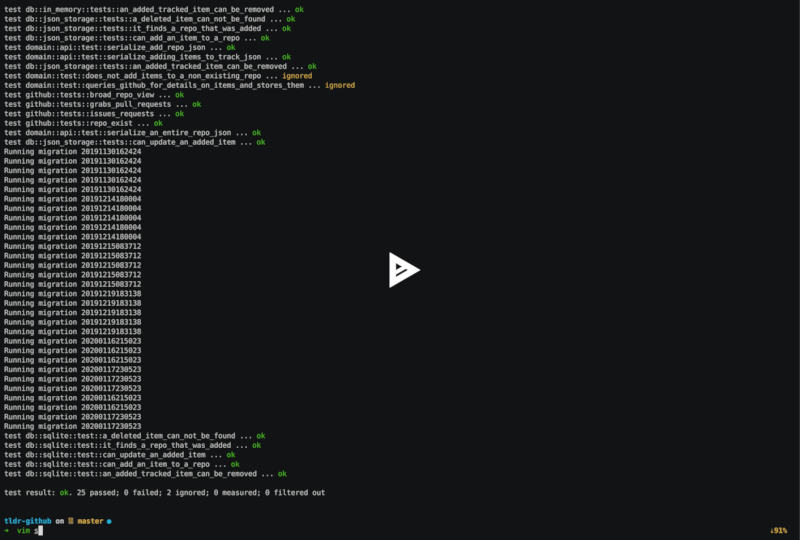1 unstable release
| 0.0.2 | Mar 23, 2020 |
|---|---|
| 0.0.1 |
|
#1 in #fern
24 downloads per month
19KB
385 lines
Fern
fern is not a build tool
It's closer to a command runner. Its gives different parts of your mono-repo a unified interface to run certain tasks.
Have a look at this blog by Jeff Ramnani Project Build Tool for the core idea.
The one and only trick up its sleeve is that, like a real life fern, it is fractal/recursive.
Context - Files where they make sense
Say you have a larger project, composed of multiple smaller parts. Each of those parts could be in a different language. Maybe your backend is written in Rust, while the mail service is a Python app, and the frontend is written in ELM.
Now, you could write a Makefile that orchestrates across all the apps,
launching cargo,pip, and elm in just the right folders.
The thing I found annoying, is that one Makefile rules them all.
That Makefile mixes and matches concerns across many languages and build tools and it needs to get clever with folders doing things like cd ui && npm install.
fern is a little different - and orders of magnitude less powerful than make - but also simpler.
fern can find fern.yaml files spread throughout your code base.
In our example, we'd have one for the Rust backend, one for the ELM frontend, and a separate one for Python.
If you want to know which files fern would consider, run fern leaves.
Because a fern has many leaves 😄.
The leaves make the fern
I have lovingly touted fern.yaml files as leaves, which is also the name of the command to list them.
In such a fern fern.yaml file you can currently define any of 4 targets:
fmtfor anything formatting relatedbuildfor anything related to building the apptestfor running any kind of testscheckfor things like type-checks or build-checks
You are allowed to write single lines like so:
fmt: cargo fmt
test: cargo test
or use lists for multiple steps:
fmt:
- npm run fmt
- prettier --write src/css/*.css
test: npm test
check:
- tsc
- prettier --check {src,test}/**/*.tsx
- prettier --check src/css/*.css
That is it. There is no way to describe interdependencies (yet) or anything fancier than that.
Running it
The commands match exactly what you'd write in the fern file:
fern fmtfor anything formatting relatedfern buildfor anything related to building the appfern testfor running any kind of testsfern checkfor things like type-checks or build-checks
With the addition of one command:
leaves shows you which fern files it would find.
You can give the argument -p or --porcelain to get all files in a single line, which is nice for opening them all in vim like so:
vim -p $(fern leaves -p)
Here is a demo of fern running in a different repo of mine:

Seeding ferns and configuration
Using fern should require as little configuration as possible, especially since its feature-set is so small.
There is one feature that needs a global configuration file though: fern seed $name.
seed will create a fern.yaml file for you, based on the $name and what is globally configured.
The configuration file is expected in $HOME/.fern.config.yaml ($HOME will vary per OS) but you can change it using the
FERN_CONFIG environment variable.
Here is a sample config file:
seeds:
rust:
fmt: cargo fmt
test: cargo test
build: argo build --release
elixir:
fmt: mix format .
test: mix test
Under the key seeds you can name different chunks that look like a fern.yaml file.
Running fern seed rust will then copy that chunk into a local fern.yaml.
This is practical if you have multiple projects that need similar configs.
Installing and contributing
At the moment, the best way to use is to clone the source and compile it with the latest Rust.
Contributions are super welcome:
- There are no tests, so feel free to write any
- Are there any lightweight features you think would benefit
fern? Open an issue or PR
Dependencies
~6–14MB
~173K SLoC